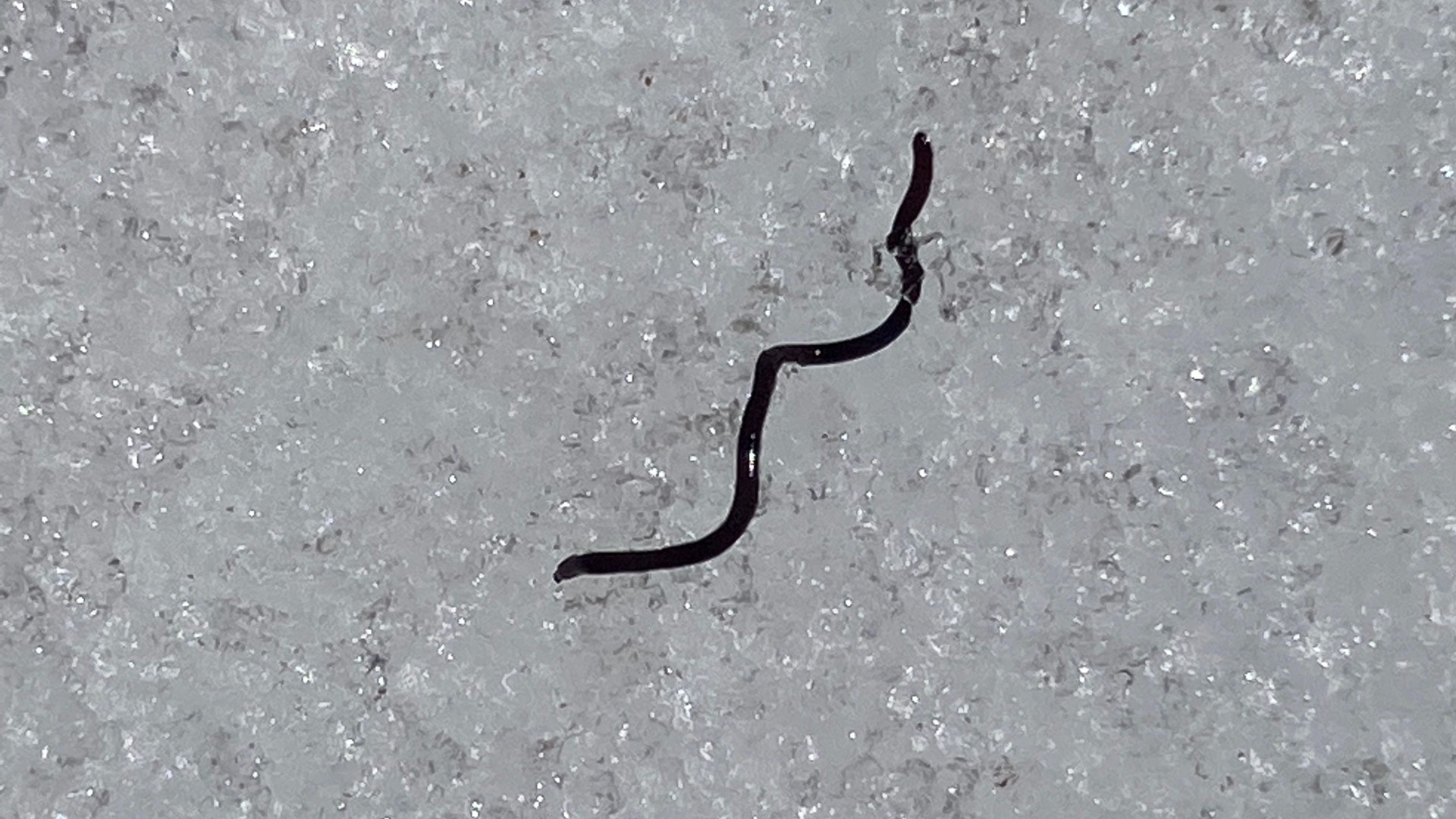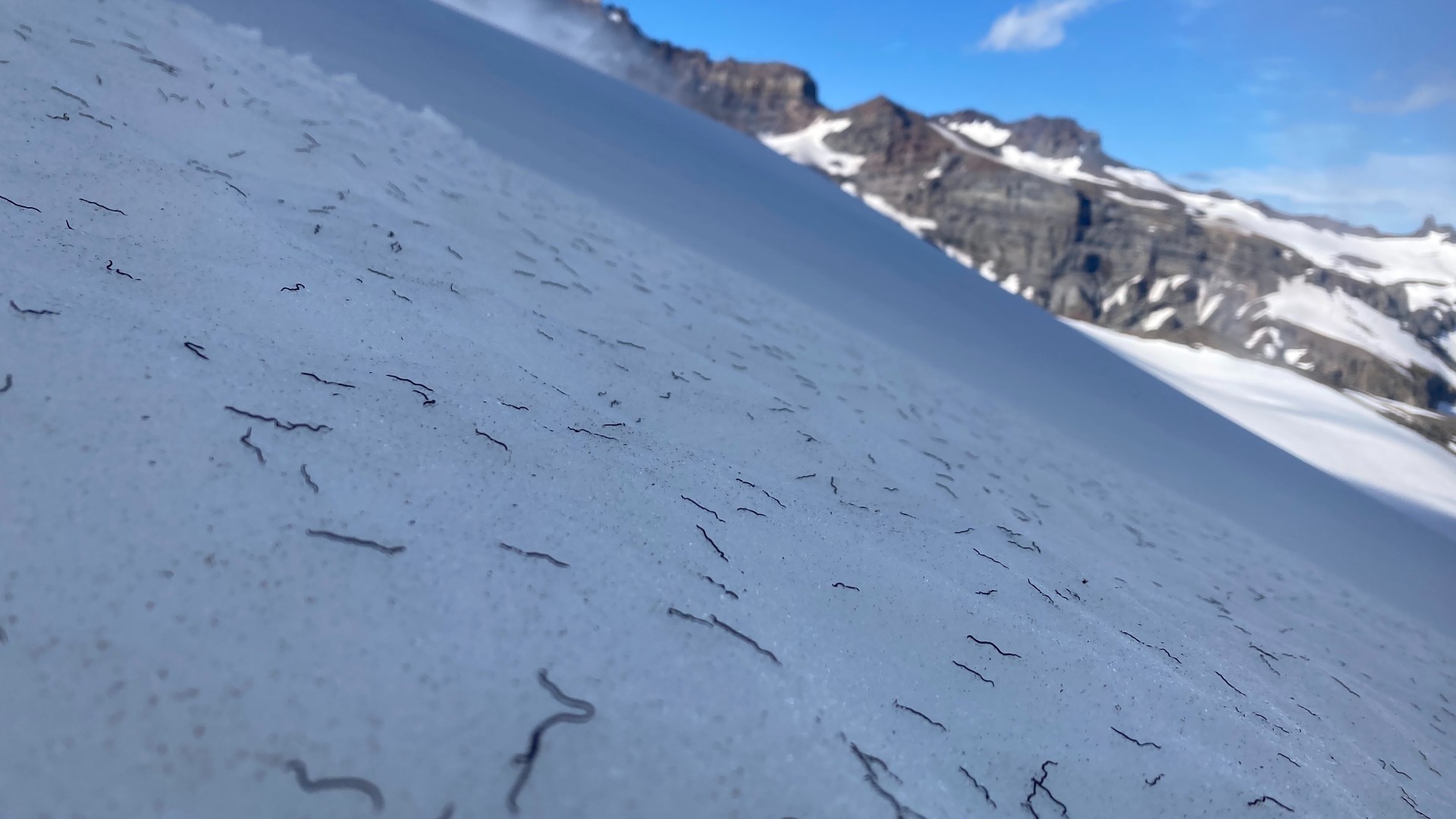Every year, billions of black ice worms crawl from the ice on Mount Rainier. We have no idea why.
We don't know much about the worms, but what we do know is pretty weird.

The glacial slopes of Mount Rainier might seem lifeless at first glance. That is, until the ice worms emerge.
As if on cue, billions of black, threadlike worms wriggle their way to the surface of the snow every summer, when the sun directly strikes the glaciers. And scientists still don't know why.
If they want the answer to that question or any other related to this mysterious creature, scientists have to act fast. Black ice worms (Mesenchytraeus solifugus) are the only worm species known to science that spend their entire lives in ice. As glaciers in the region shrink due to global warming, these worms risk becoming extinct alongside them.
Related: Study of nearly every glacier on Earth shows ice loss is speeding up
To beat the ticking clock, Scott Hotaling, a biologist at Washington State University, makes sure that as soon as ice worms appear on the mountain's Paradise Glacier, so does he. Hotaling is one of the few people who actively studies this species.
"I saw my first ice worms when I was working [a summer job] in Olympic National Park," in Washington State, Hotaling told Live Science. He had been a student of ecology at the time, but the ice worms made him realize that he could carve a unique niche for himself as a scientist. "It was cool because I would ask these questions — like, 'Where do they live?' and 'How do they reproduce?' — and I realized that actual scientists were still asking those same questions," said Hotaling.
The worms were first described in 1898, but few people studied them in the intervening century. As a result, not much is known about them despite the fact that they seem to be the most abundant species living inside glaciers.
Sign up for the Live Science daily newsletter now
Get the world’s most fascinating discoveries delivered straight to your inbox.
For instance, we don't know why they emerge in the summer, or why they spend most of their lives buried deep in ice. Further, what they do underneath the ice for so long is a complete mystery.
However, what little we do know about them suggests these worms are amazing.
For example, they live for months in ice, but they cannot tolerate freezing. "It's wild, but they basically survive at the very edge of their tolerance," said Hotaling. These are worms that spend most of the year buried under ice, only to emerge briefly in the summer. Paradoxically, being exposed to wind on the surface puts them most at risk of freezing solid. They keep warm enough to survive by being buried in ice. "Think of it like living in an igloo," he said. "It's negative 40 degrees [Celsius, or minus 40 degrees Fahrenheit] outside, but it's probably zero degrees Celsius [32 F] on the inside."

Hotaling thinks the worms' summer behavior resembles that of their distant cousins, earthworms. They crawl through the ice, eating the bacteria and algae in front of them and excreting waste behind. But what they do all winter is "the ultimate ice worm mystery," he said. He would love to know the answer, but these elusive worms are buried beneath dozens of feet of snow for much of their lives, making them hard to study.
Despite being widespread throughout Alaska and the Pacific Northwest, these worms are limited to very specific glacial habitats where they can exist on the fringes between alpine forests and frozen mountain peaks. But it likely wasn't always that way. "Our limited genetic evidence suggests that ice worms probably covered the landscape during the last glacial period," Hotaling said. When the glaciers retreated at the end of the Pleistocene, around 20,000 years ago, the worms were left on isolated peaks, where they have thrived ever since.
They are not alone up there, either. Hotaling noted that ice worms are likely an important food source for bird species that brave the cold. Among these are gray-crowned rosy finches, the highest-elevation nesting bird species in North America. Gray-crowned rosy finches build nests directly on the ice and forage in the snow for the hidden bounty of ice worms, suggesting the worms are a crucial food supply for the finches.
Even though not much is known about ice worms, it's clear that they are a key part of an imperiled ecosystem. As glaciers recede, they risk taking the worms and everything that relies on those worms with them, and Hotaling is acutely aware that his research is time-sensitive. "These are some of the most rapidly changing habitats on Earth, yet we know so little about them," said Hotaling.
Originally published on Live Science.

Cameron Duke is a contributing writer for Live Science who mainly covers life sciences. He also writes for New Scientist as well as MinuteEarth and Discovery's Curiosity Daily Podcast. He holds a master's degree in animal behavior from Western Carolina University and is an adjunct instructor at the University of Northern Colorado, teaching biology.










